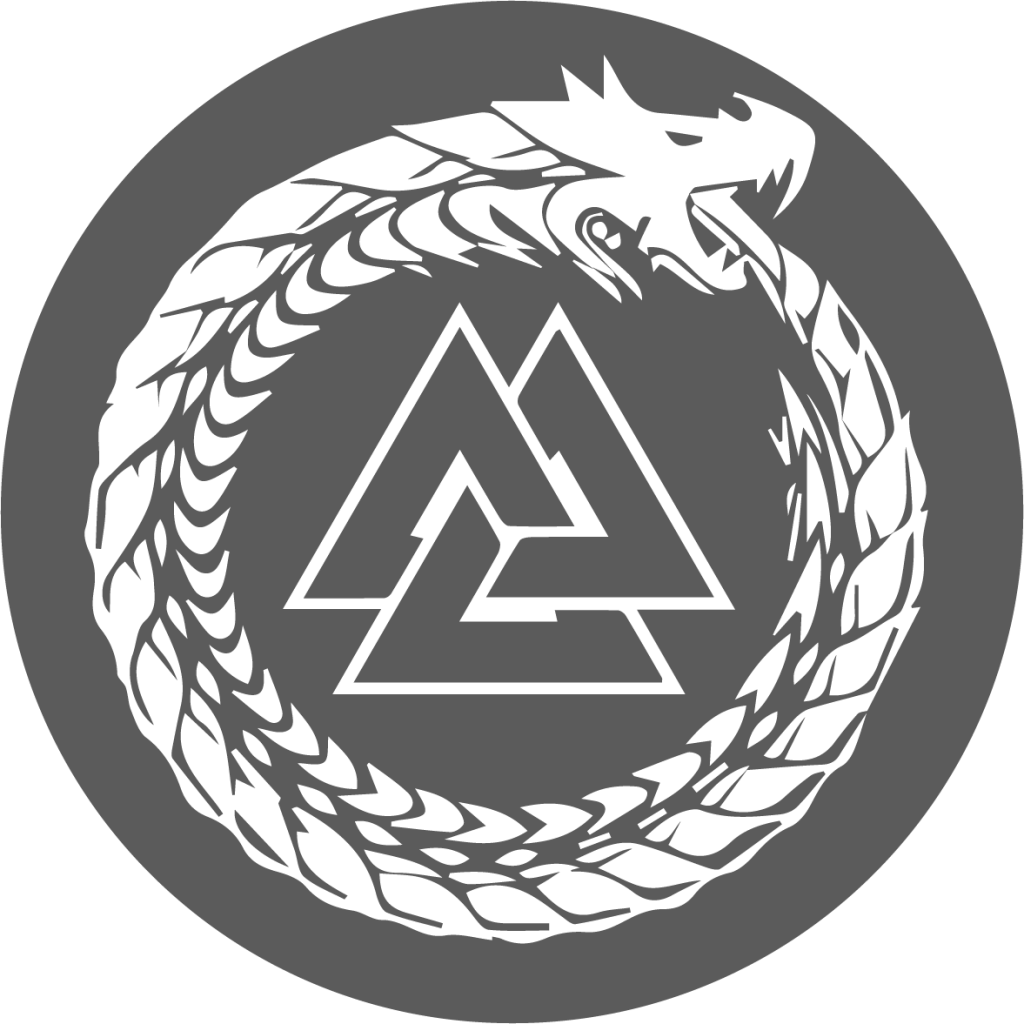
The Valknut (the central triune triangles) was the ancient Norse symbol for Odin, the Allfather, possibly an eventually-distorted concept of God the Father as people spread out post-Flood. It’s easy to see how, like the childhood game of telephone, ideas (or “memes” if you will), even those of people’s concept of the Creator, get distorted over time. Robert Jordan once wrote “…ages come and pass, leaving memories that become legend. Legend fades to myth and even myth is long forgotten when the age that gave it birth comes again.” While I personally don’t believe that time in general is a Wheel, but rather is linear, from a beginning and possibly to a future end, this concept of storytelling does translate well as history passes down from generation to generation and place to place.
The World Serpent, Jorgamundr, was believed to encircle Midgard, their concept of the world we live in, and contain the ‘world sea’ by biting its own tail… The Norse didn’t necessarily believe the world was flat – their world was defined by sailing a world of fjords, islands, archipelagos and shorelines. Their worldview was formed by their experience in navigation, and the sea was the curving horizon they knew well… and an invitation to explore all the way to the “new world”. It was believed that the apocalypse (aka ‘end of the world’ called ‘Ragnarok’) would begin when Jorgamundr released its tail and let spill the World Sea.
As a Christian, a history geek and a Tolkien fan, I found this fascinating (also from Wikipedia’s Midgard entry:
The Old Norse name Miðgarðr is cognate with Gothic Midjungards (attested in the Gospel of Luke as a translation of the Greek οἰκουμένη), Old SaxonMiddilgard (in Heliand), Old High German Mittilagart (in Muspilli), and Old English Middangeard. The latter, which appears in epic and poetry, was transformed to Middellærd or Mittelerde (“Middle-earth”) in Middle English literature.